Images: The Church of the Holy Sepulchre
Holy Site
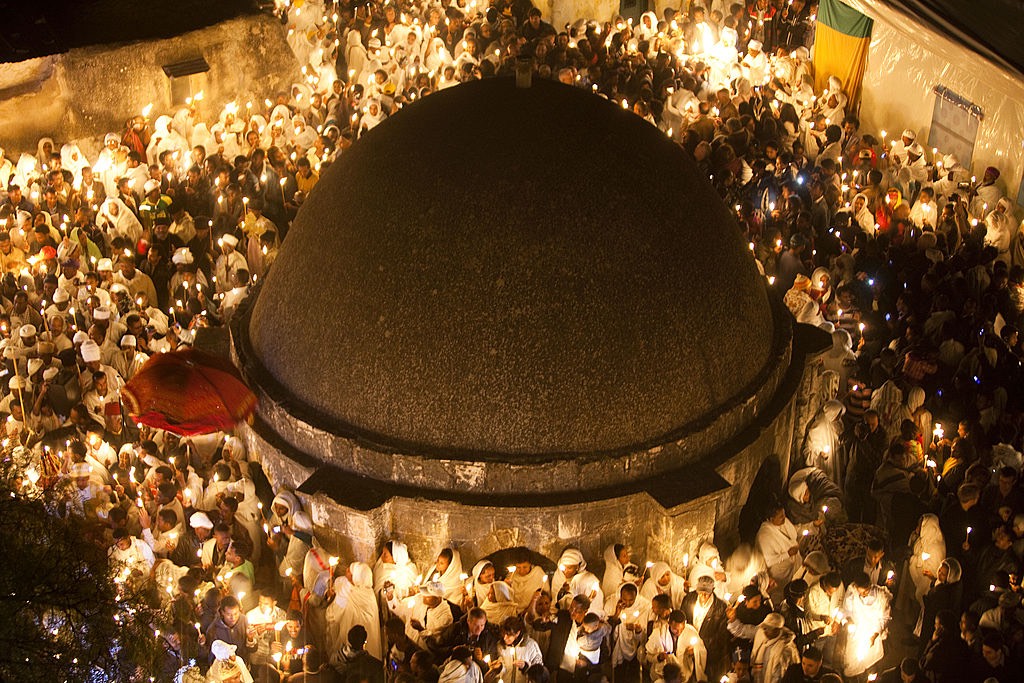
Candles lit by sacred fire light up the Church of the Holy Sepulchre in Jerusalem in April 2011. The church is said to be built over the original burial place of Jesus Christ. The structure in the middle of the dome is the Holy Edicule, which is built directly over the tomb. Marble slabs have covered the original bedrock of the tomb since at least A.D. 1555.
Conserving the Christ's tomb
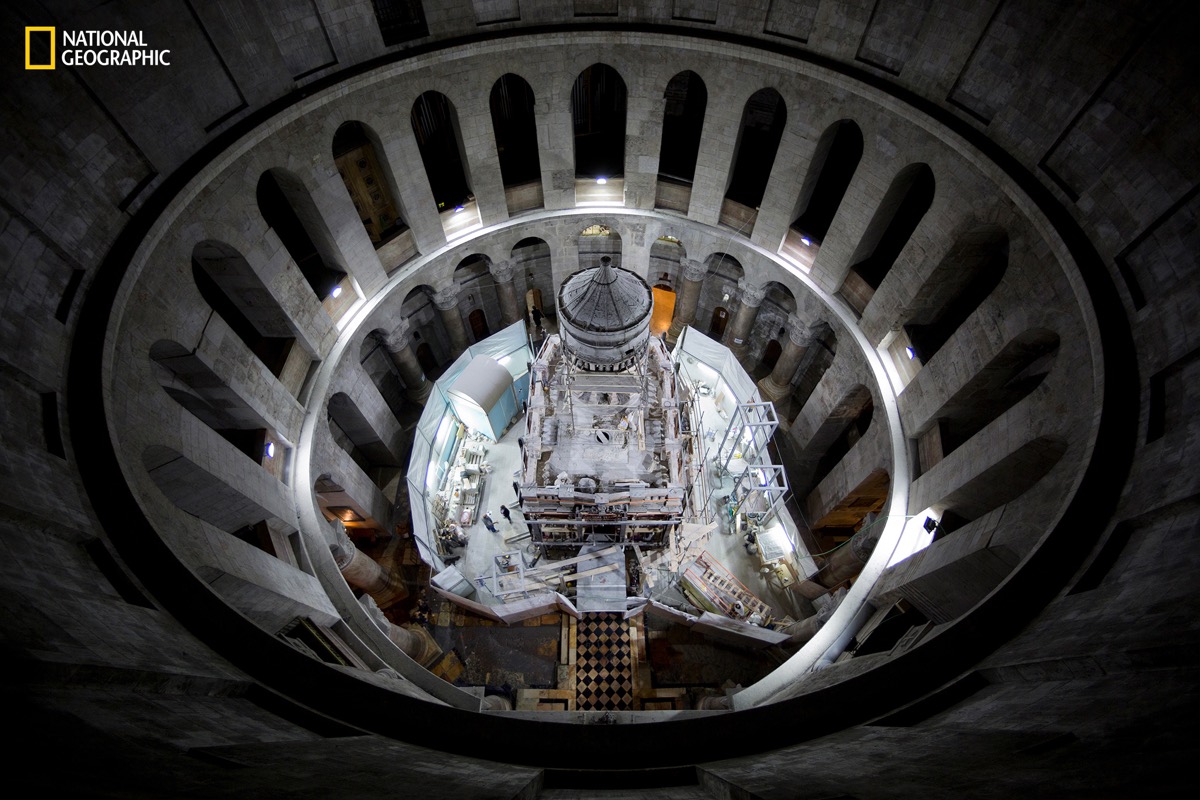
The Holy Edicule, the shrine that surrounds the rock tomb traditionally believed to belong to Jesus Christ, sits within the Church of the Holy Sepulchre in Jerusalem. Here, a conservation team led by the National Technical University of Athens works on a long-awaited restoration project of the structure. The three church sects that control the site agreed on the need for restoration in 1958, but it took nearly half a century to agree on a proposal and secure funding. National Geographic was a partner in the project, which was led by the National Technical University of Athens.
Pilgrimage site
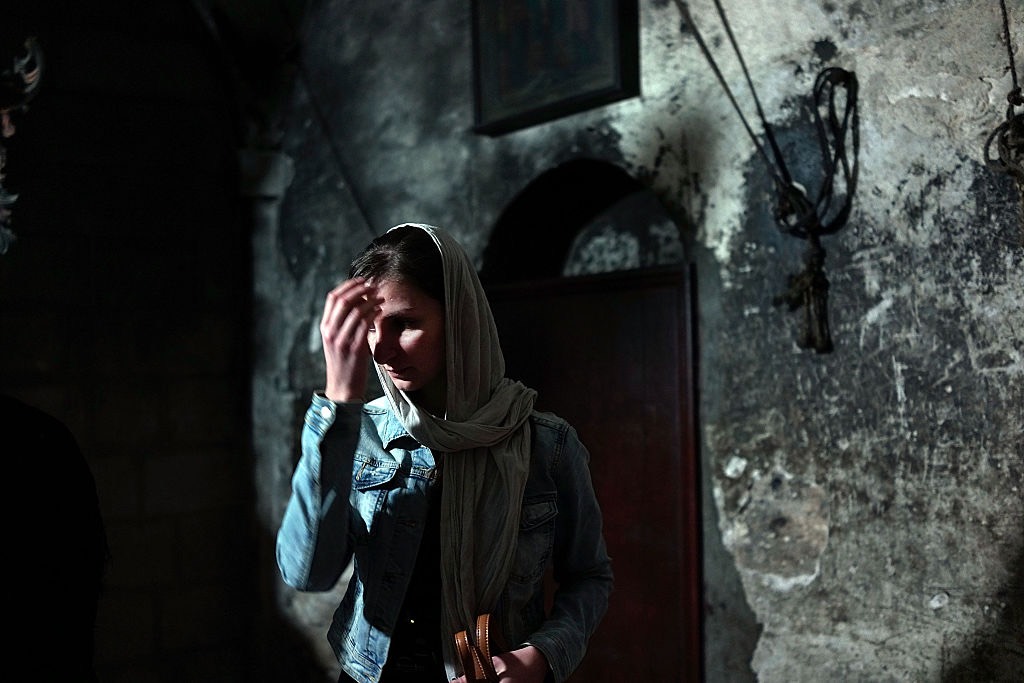
A woman crosses herself in the Church of the Holy Sepulchre in November 2014. The site was identified as a holy shrine by Helena, mother of the first Christian Roman emperor Constantine, in A.D. 326. The Edicule structure was built over the remains of the burial cave, allowing pilgrims to peer down at the rock slab where Jesus' body was said to have rested. The modern-day Edicule is only about 200 years old, having been rebuilt between 1808 and 1810 after a fire.
Tomb of Jesus
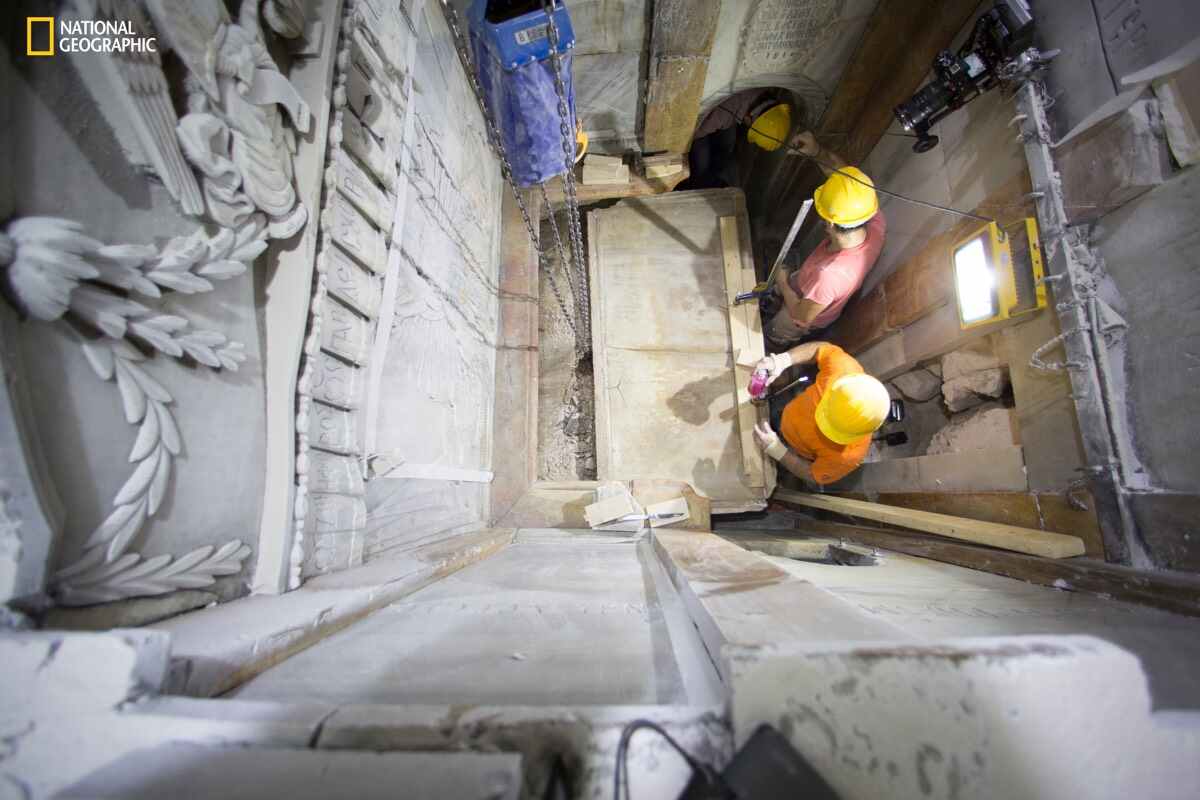
Workers remove a marble slab covering the original stone "burial bed" where Jesus Christ is said to have been laid to rest after being crucified. The marble slabs were placed to protect the rock from graffiti and vandalism by souvenir-seekers, Robert Cargill, an archaeologist and author of "The Cities that Built the Bible" (HarperOne, 2016), told Live Science.
The conservation efforts of October 2016 are the first time in recorded history all of these slabs have been removed.
A layer of loose fill material is seen beneath. Scientists were surprised at how much of the original cave structure remained, said National Geographic archaeologist-in-residence Fredrik Hiebert. National Geographic, a partner in the excavations, was the first to report the opening of the tomb.
Historical Jerusalem
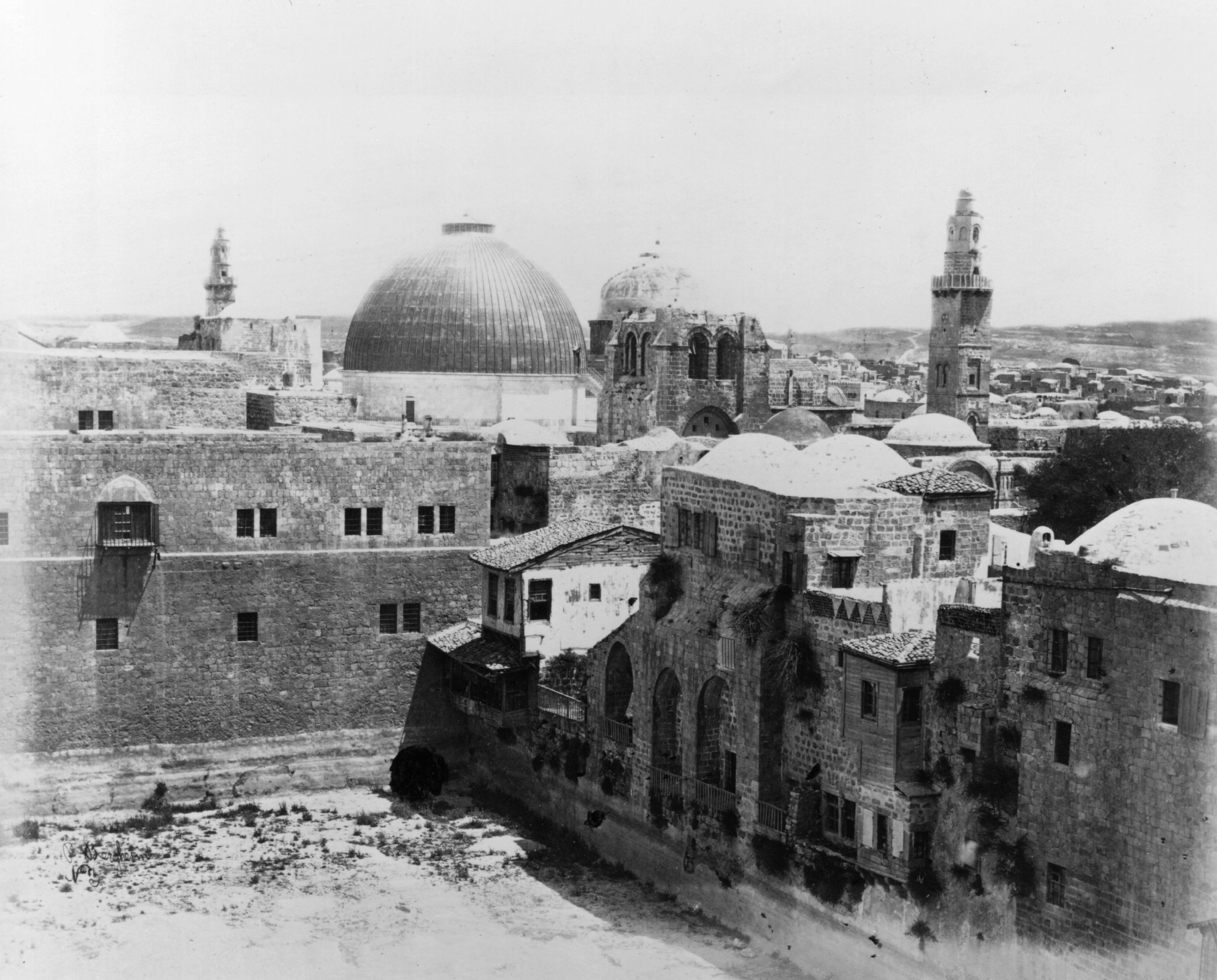
A photograph taken around 1900 shows the dome of the Church of the Holy Sepulchre in the Old City of Jerusalem. The Pool of Hezekiah, drained, is seen in the foreground.
Sign up for the Live Science daily newsletter now
Get the world’s most fascinating discoveries delivered straight to your inbox.
Church altar
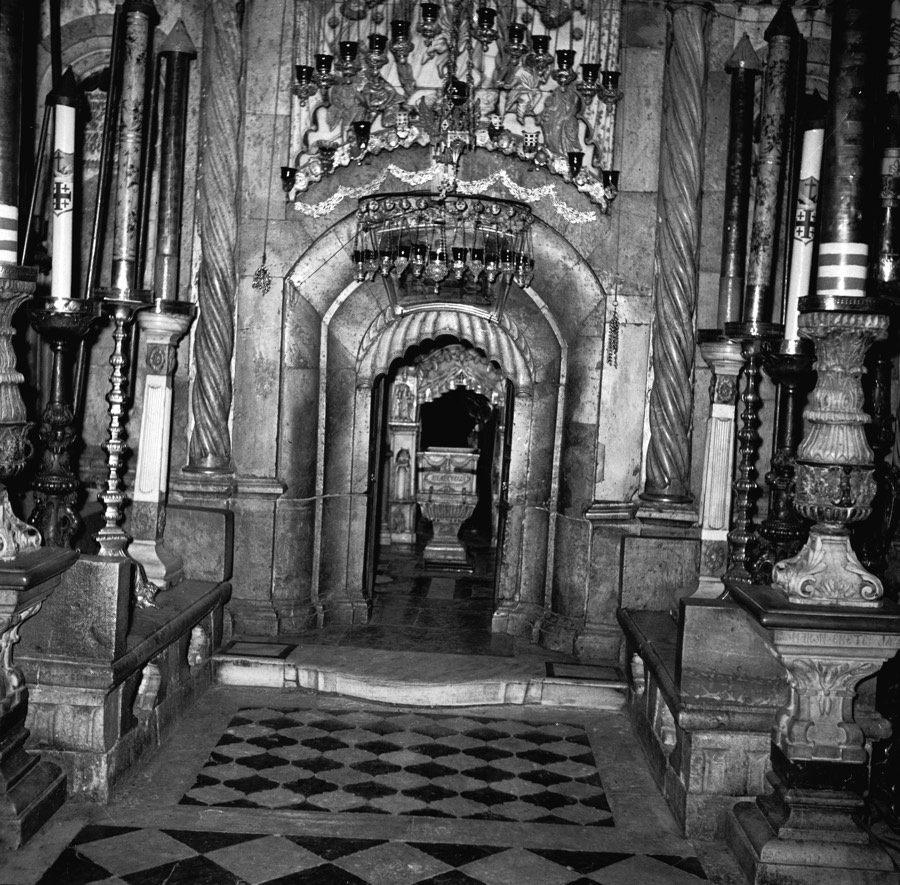
Another photograph of the Church of the Holy Sepulchre taken around 1950 shows the altar, which is referred to in St. Luke's Gospel as the site of Jesus' resurrection. The building is constructed over what is traditionally believed to be the burial place of Jesus as well as the spot where he was crucified. Archaeologically speaking, there is no direct evidence that Jesus died or was buried here, Cargill told Live Science, but the site is an important one for the cultural tradition of Christians.
Worshipers of many sects
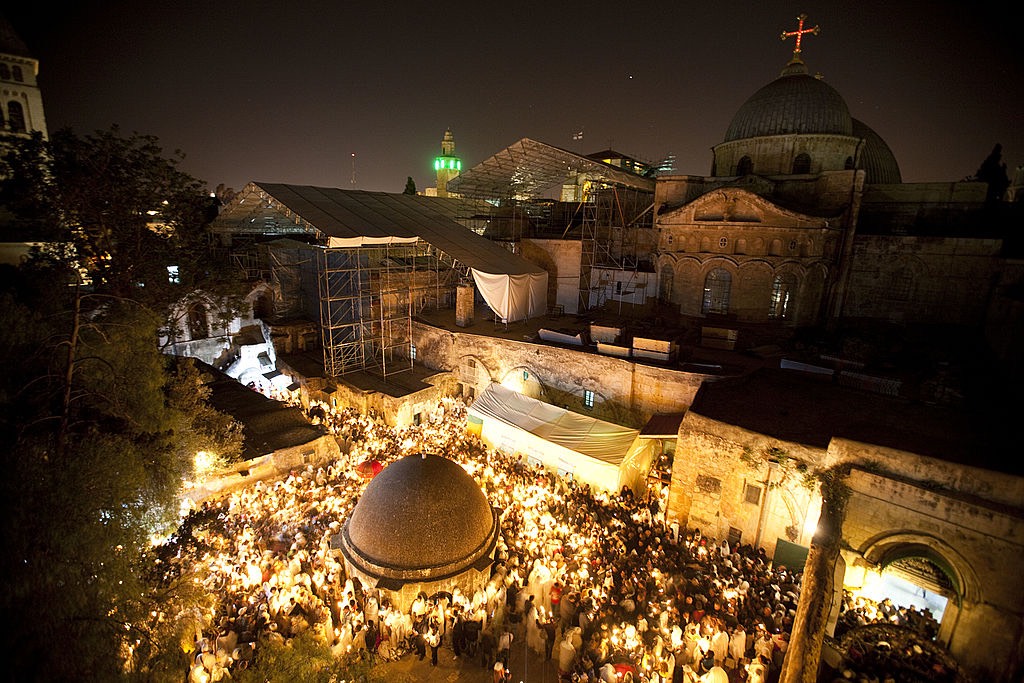
Uriel Sinai / Stringer
Stone of the Anointing
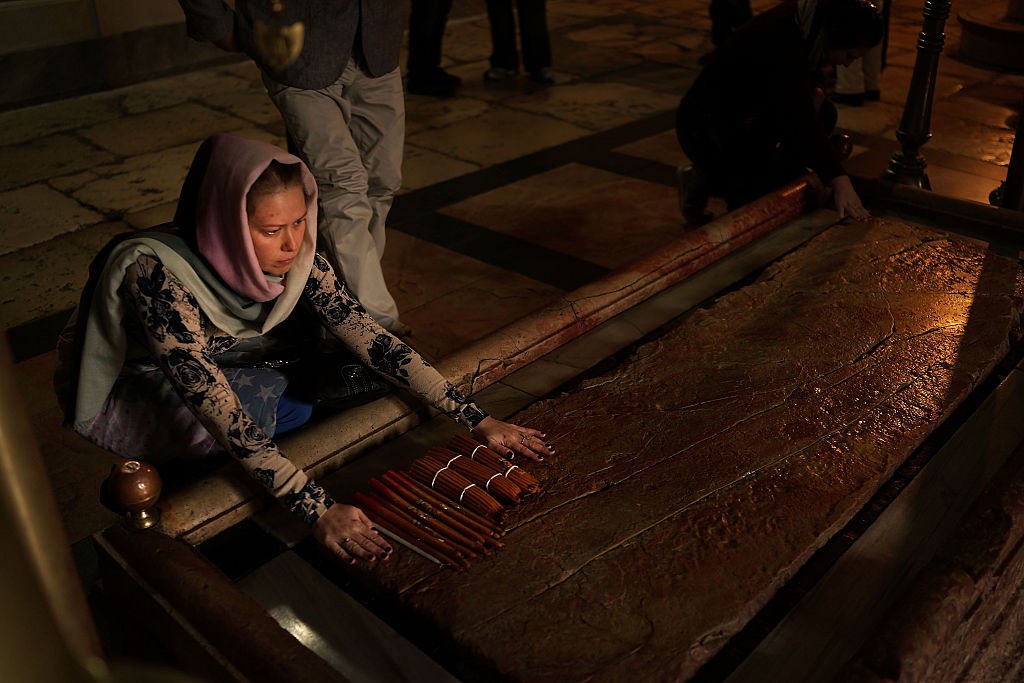
A pilgrim runs her hand across the Stone of Anointing in the Church of the Holy Sepulchre in 2014. This stone is traditionally held to be the spot where Jesus Christ's body was prepared for burial after crucifixion. Pilgrims have been coming to the church since the fourth century A.D.
Around the Edicule
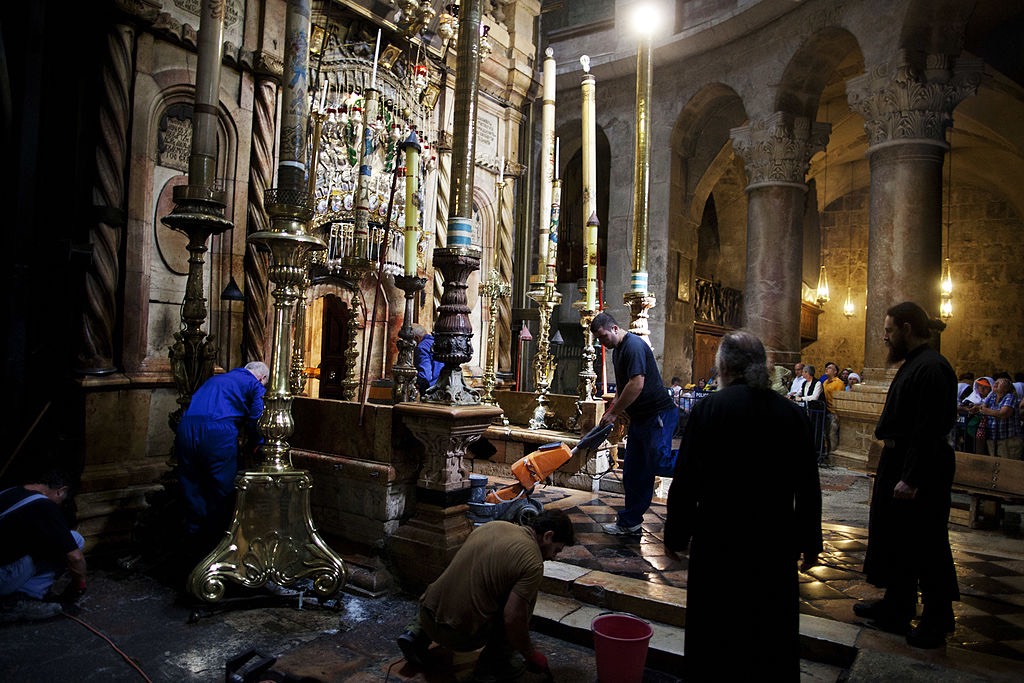
A view of the Edicule built over the stone slab said to be the tomb of Jesus Christ. This structure dates back to 1810, but as conservationists worked to stabilize it in October 2016, they found marble from the 1810 reconstruction over marble from the 1400s and 1100s. These slabs will be stabilized with mortar to preserve the structure permanently.
Here, Christian priests watch workers clean the floor on May 23, 2014 in preparation for the visit of Pope Francis, who visited both the West Bank and Israel.
Restoration project
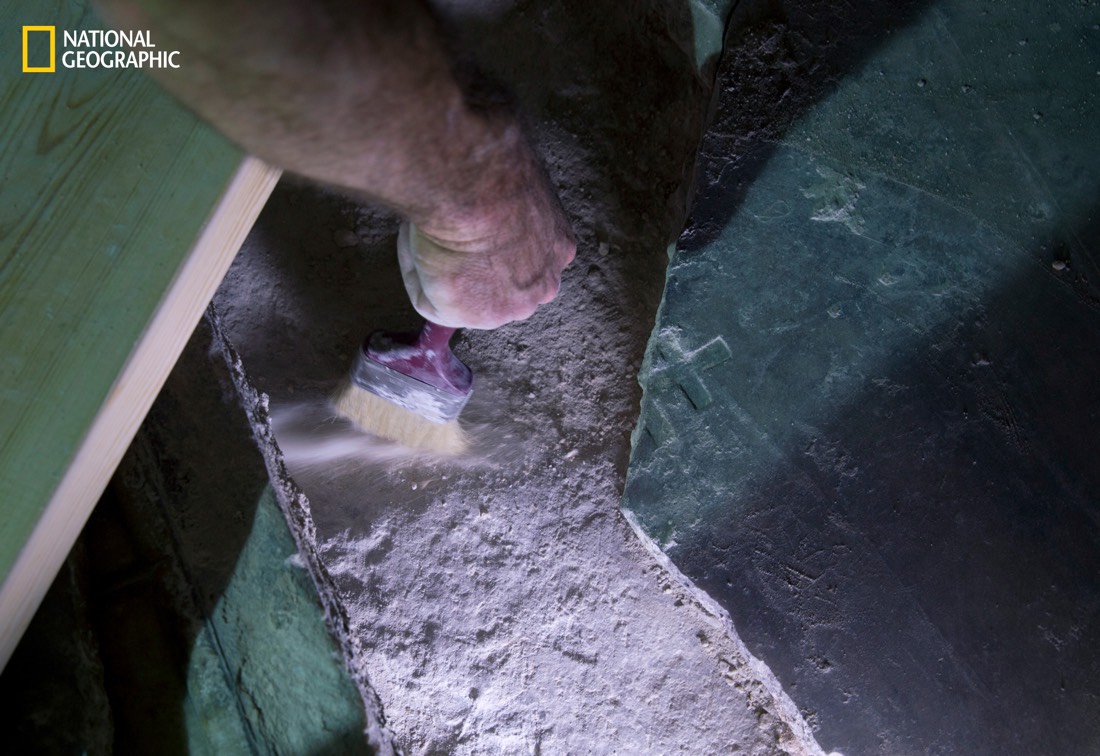
A restorer brushes loose dirt and dust from the original limestone surface of what is said to be the tomb of Jesus Christ. A team from the National Technical University of Athens exposed this surface for the first time in centuries on Friday during a project to shore up the Holy Edicule, the shrine around the tomb in the Church of the Holy Sepulchre in Jerusalem.
Cross engraving
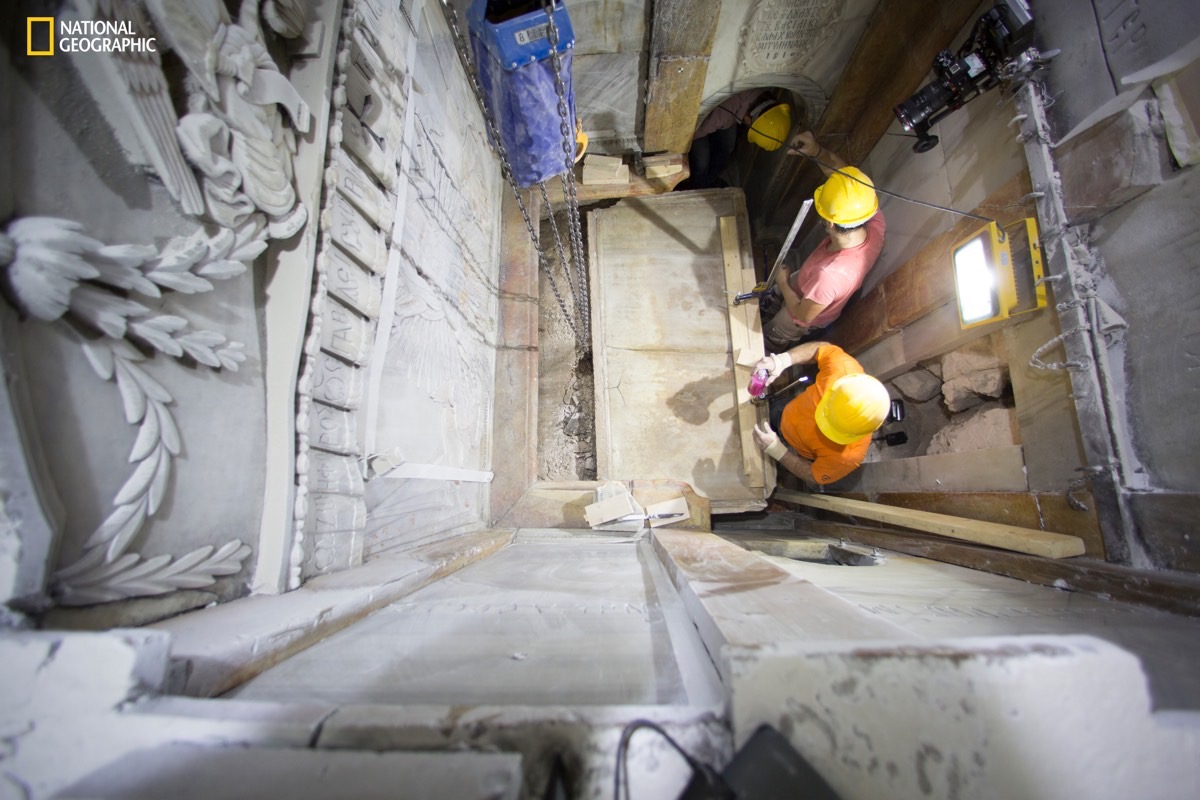
An unobscured view of the limestone bedrock of the tomb said to belong to Jesus Christ. This bedrock has been covered with protective marble slabs since at least 1555. The marble slab engraved with a cross seen here may date back to the Crusader era, between the 1000s and the 1500s.

Stephanie Pappas is a contributing writer for Live Science, covering topics ranging from geoscience to archaeology to the human brain and behavior. She was previously a senior writer for Live Science but is now a freelancer based in Denver, Colorado, and regularly contributes to Scientific American and The Monitor, the monthly magazine of the American Psychological Association. Stephanie received a bachelor's degree in psychology from the University of South Carolina and a graduate certificate in science communication from the University of California, Santa Cruz.









